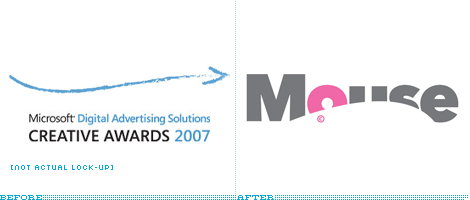
If you’ve never heard of the [deep breath] Microsoft Digital Advertising Solutions Creative Awards it may most likely be because — if you reside in the U.S. like yours truly — it’s a European competition, or because it’s only two years-old, or, possibly, because its six-word-long name is downright forgettable, if not obnoxious — or maybe, by default, you just stop reading anything after the word “Microsoft”. Also, the criteria for entering is somewhat limiting: Advertising that appeared only in a Microsoft-run web site like MSN or XBOX Live. The one uptick to these awards is that the first-prize winners in each category get automatically entered into the Cannes Cyber Lions competition — a big deal if there ever was one. Seeing that a coveted “Lion” award was the ultimate bait, Brand Guardians and johnson banks (who are the firm responsible for the playful identity), focused on fauna-influenced naming and arrived at “Mouse” as a better, catchier and more memorable name for these awards.
Continue reading this entry
Coming this holiday season, Tru2way will be unveiled. What is Tru2way? It is an interactive experience with your television unlike anything you have had until now. It will be carried on major cable operators including Comcast, Cox, Time Warner Cable, Cablevision, and Bright House Networks.
Continue reading this entry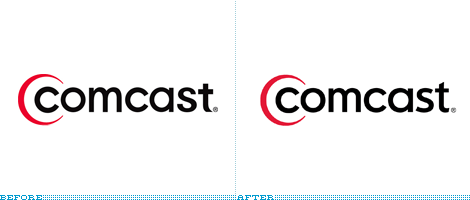
Here is a fun one for the beginning of the holiday season. Sent in by a brand tipster — have I told you all already how much I love the tips? If not, well, let me be thankful for that this Thanksgiving — this is an almost impercebtible before/after of the Comcast logo. It is not uncommon to have logos redrawn for performance and legibility issues, but I am not convinced Comcast needed this treatment. Sure, the old “t” was ghastly, but still understandable, and I think I may like the old “s” better, although it looks like a transplant from Helvetica into Avenir, approximately typeguessing, as all the characters (old and new) feel customized.
Continue reading this entry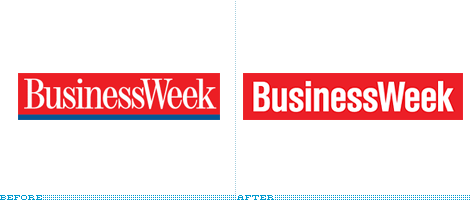
There are a few magazines that I read/peruse irregularly, usually at airports or doctors’ waiting rooms. For the most part I can remember what these look or feel like, even if I only see them intermittently. Whether it’s National Geographic, or Us Weekly, or Fast Company I can picture the layouts and the typography, no matter how high or low it leans. As news broke out of the recent redesign of BusinessWeek, and as I picked it up at the newsstand (in Denver’s airport) I was unable (perhaps unwilling) to remember what the old BusinessWeek used to look like — my best bet at this point is “generic” with a dash of “boring” as I simply could not picture anything other than the condensed serif on the cover. So as I flipped through the new BusinessWeek I was happy to find a cohesive visual tone that, even if not particularly groundbreaking in the general design sense (as every single visual styling has been done before, from the thick-underlined-text to the text-in-a-ragged-box mannerisms, which I have done myself I must admit), creates a memorable and impactful, in that businessy-type-A way, viewing experience — starting with the new logo on the cover, all the way through to the last page.
Continue reading this entry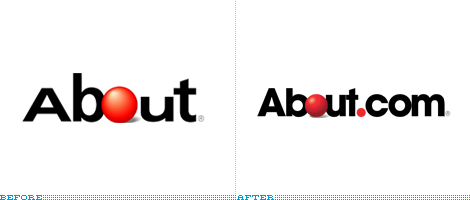
Despite 29 million monthly visits (with “one out of every five people on the Internet” using it), 57,000-plus topics and more than 1.2 million “pieces of original content” I have never had a friend, designer or otherwise, refer me to About.com — or, if so, I can’t remember. I may have followed a sangria recipe once — or, if not, I can’t remember either. This is not a knock on their vast content as, clearly, there are those who consume it but maybe it’s more a reflection of their lack of brand impact. One reason could be that when you stand for everything, you stand for nothing. And with volume being the biggest attraction, it’s no surprise that About.com’s identity is non-existent, despite their commitment to the color red. With little fanfare and no press releasing, the web Goliath has introduced a new cleaner logo that brings the site out of its Web 1.0 roots (it was launched in 1996) and sheds the crazy horizontal scaling of a Humanist sans serif font that I can’t recognize with a new Geometric sans serif font that I can’t recognize either. (I think there is some mixing and matching going on). The old About.com logo had the overstayed welcome quirkiness as the Google logo has now so, to me, it’s nice to see the site grow up. Even if I won’t remember.
Thanks to Tim Hettler for the tip.
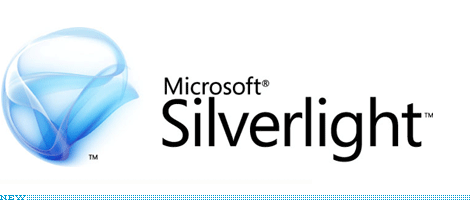
First, let’s get the technicalities out of the way: “Microsoft Silverlight is a cross-browser, cross-platform plug-in for delivering the next generation of media experiences and rich interactive applications (RIAs) for the Web.” In other words, it’s the next “Flash killer” but, as we all know, it’s rare that anything positioned as a [blank]-killer can actually pull the trigger, so Silverlight needs all the flash it can get. And, by heavens, is that logo ready for 2007 primetime! As an identity that will live 99.99% of its time in online and on-screen applications this new identity excels as a nebulous-abstract-who-cares-what-it-is piece of eye candy that should at least position Silverlight as the media application of the future. (Despite its almost-ten-years-in-the-making ubiquity, Adobe’s Flash Player is looking a tad tired.) While the Blobby Ball of Nebulousness™ keeps my eyes affixed to it, I can’t help but be broken out from its spell by the faux Myriad typeface used for the name — why Microsoft can’t opt for good typography has always baffled me — Gotham, Futura, Helvetica, anything but this would make their design stand out so much more. Wait— what’s that? Mmmmm… Nebulousness. Juicy close-up of it after the jump.
Continue reading this entry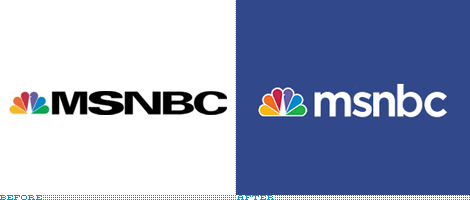
When I was first tipped about the change of logo at msnbc.com, earlier this month, I floatingly replied, “looks like at least someone’s paying attention to the kerning,” and dismissed it as a simple typography change made internally over the weekend while no one was watching. This, paradoxically, is both disdain for the new msnbc.com logo but praise for the new identity and brand positioning. Let me explain. (As if I wasn’t going to).
Continue reading this entry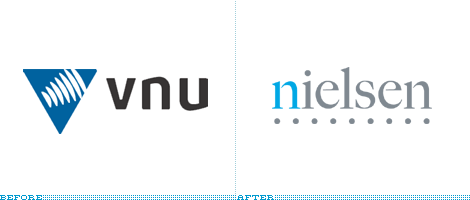
Those nine little dots have impaired any and all constructive blognalism™ that I could have mustered, so let’s just get a few facts out of the way: The VNU Group, a very large media group based in the Netherlands, has changed its name to The Nielsen Company and rolled out a new identity designed by Landor. The change is a response to “Nielsen [being] one of the great names in the information-services industry,” as CEO David L. Calhoun states and, indeed it is. When TV networks throw around rating numbers they are usually referring to Nielsen Ratings, a system developed by Nielsen Research Media. Other well known enterprises under the Nielsen umbrella include: Adweek, Brandweek, Billboard, Claritas, The Hollywood Reporter and dozens of others. One thing is clear, The Nielsen Company is a leading, powerful, important, global conglomerate. So…
Continue reading this entryPrevious Page |
(Total Number of Pages in Media: 2)


















